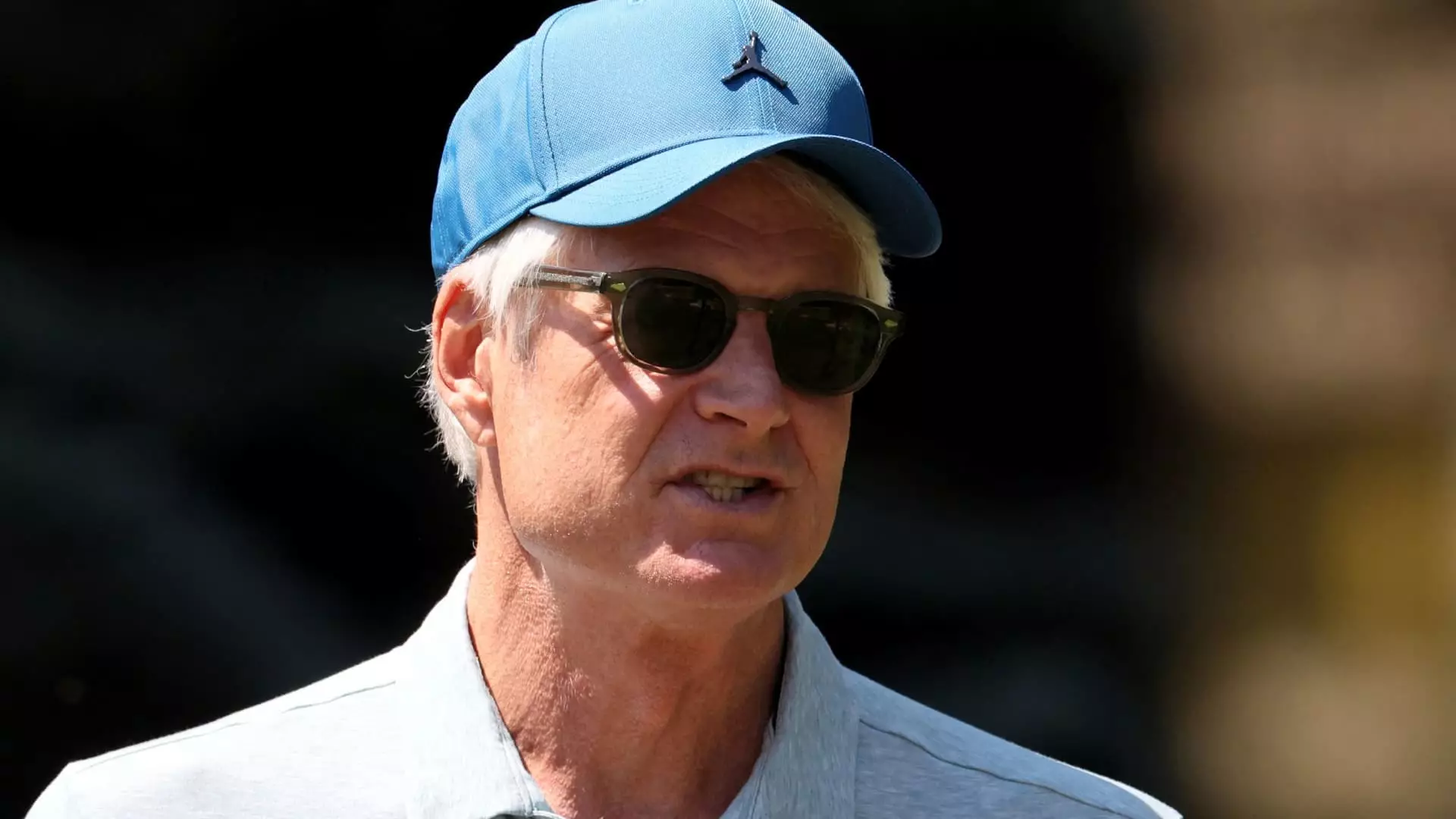Nike, a titan of the sporting goods industry, is navigating a significant leadership shift as CEO John Donahoe steps down after a turbulent tenure. Elliott Hill, a seasoned veteran and former president of Nike’s consumer and marketplace division, is set to return just one day after Donahoe’s departure. This leadership reorganization comes at a critical juncture for the company, which faces multiple challenges, including declining sales and a market increasingly crowded with emerging competitors. Analyzing this transition, it becomes clear that the implications are profound, not just for Nike’s internal dynamics but also for its long-term strategic goals.
The resignation of Donahoe—who initially took the reins in January 2020—signals deep-rooted issues within Nike. His era has been characterized by a strategic pivot towards direct consumer sales, reshaping the traditional retail structure by emphasizing e-commerce and digital marketing. While this intention was undoubtedly aligned with market trends, the outcomes have proven less favorable. The company reported an unforeseen 10% drop in expected sales during a recent quarter, the largest in its history since its public debut. Analysts and shareholders reacted negatively, reflecting a loss of confidence that may have catalyzed Donahoe’s departure.
Elliott Hill’s comeback is steered by the board’s assessment that his familiarity with Nike’s ethos, history, and culture positions him uniquely to steer the ship through these choppy waters. His appointment elicits hope for a rejuvenation of the company’s pioneering spirit that has seemingly waned during Donahoe’s tenure. Hill’s experience is anticipated to resonate well with employees, a key factor as morale reportedly dips, affecting productivity and company culture.
Nike’s aggressive restructuring of its sales model has drawn criticism from various quarters of the industry. The emphasis on direct-to-consumer sales, while innovative, arguably led to an oversight of essential product innovation. Critics have pointed out that the brand has not released signature, groundbreaking footwear products in recent cycles—something that was once its hallmark. As Nike focused on leveraging its own retail spaces and online platforms, it inadvertently opened the door for competitors like On Running and Hoka to capitalize on gaps in product diversity.
The situation has been exacerbated by external market variables, particularly in China, where economic fluctuations have dampened demand. Hill’s challenge will be to identify and reintegrate the core principles that made Nike a pioneer in sportswear while addressing the current disarray within market operations. A balanced approach merging innovation and direct retail strategies will be crucial in regaining both market share and consumer confidence.
One of the select advantages Hill brings is an intimate understanding of Nike’s culture. He started as an intern in the 1980s and spent over three decades climbing the corporate ladder. His return is emblematic of a nostalgia for authentic leadership rooted in shared identity and vision. Jessica Ramirez, a senior research analyst, notes that Hill’s deep understanding of the company’s culture will be vital in revitalizing employee morale and engagement.
However, reviving this culture will pose considerable challenges. Employees have expressed concerns over the earlier top-down directives that seemed disconnected from the ground realities of their roles in the company. Hill will need to establish open channels of communication, enabling a participative environment that fosters innovation, creativity, and most importantly, ownership.
Moreover, as Nike aims to re-kindle its relationship with wholesale partners and identify viable market segments, the focus should also include rejuvenating their acclaimed legacy of innovative designs, particularly in the running and women’s categories. A holistic focus on product reinvention, brand collaborations, and effective marketing strategies will be essential in sustaining Nike’s market dominance.
Conclusion: A New Chapter Awaits
Nike stands at a critical juncture, with Elliott Hill’s reinstatement symbolizing a turning point that many hope will redirect the trajectory of the brand. The long-term success of this transition will heavily depend on the willingness of Hill and his team to stabilize the internal culture, revive innovation, and meet consumer expectations. Leadership transitions are inherently fraught with uncertainties, but they provide an opportunity for renewal. As Nike moves forward, the collaboration between experienced leaders and the enthusiasm of the emerging workforce could very well determine the future of this iconic brand. The path ahead may be challenging, yet the potential for rejuvenation remains substantial.

